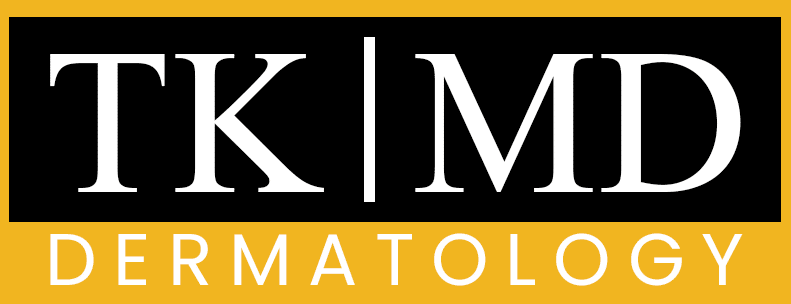As I delve into the world of skincare, I find it essential to understand the underlying causes of oily skin. Oily skin is primarily a result of overactive sebaceous glands, which produce excess sebum. This natural oil is meant to keep my skin hydrated and protected, but when produced in excess, it can lead to a shiny complexion and clogged pores.
Factors such as genetics play a significant role in determining my skin type.
If my parents had oily skin, there’s a good chance I might inherit that trait. Hormonal fluctuations also contribute significantly to the oiliness of my skin.
For instance, during puberty, menstruation, or pregnancy, my body experiences changes in hormone levels that can trigger increased oil production. Stress is another factor that I cannot overlook; when I am stressed, my body releases cortisol, which can stimulate the sebaceous glands. Additionally, environmental factors such as humidity and heat can exacerbate the condition, making it crucial for me to be aware of how my surroundings affect my skin.
Key Takeaways
- Oily skin is caused by genetics, hormonal changes, and overactive sebaceous glands
- A proper skincare routine for oily skin includes cleansing, toning, moisturizing, and using sunscreen
- Look for oil-free, non-comedogenic, and mattifying products when choosing skincare products for oily skin
- Exfoliation helps to remove dead skin cells and unclog pores, but should be done gently to avoid irritation
- Managing oily skin through diet and lifestyle changes involves staying hydrated, eating a balanced diet, and managing stress levels
Establishing a proper skincare routine
Creating a proper skincare routine is vital for managing oily skin effectively. I have learned that consistency is key; I need to cleanse, tone, and moisturize daily to maintain balance. The first step in my routine is cleansing, which helps remove excess oil and impurities from my skin.
I prefer using a gentle foaming cleanser that effectively breaks down oil without stripping my skin of its natural moisture. This step sets the foundation for the rest of my routine. After cleansing, I apply a toner to help tighten my pores and remove any residual oil.
I have found that using an alcohol-free toner is beneficial, as it does not irritate my skin or cause excessive dryness. Following this, I apply a lightweight, oil-free moisturizer. Contrary to popular belief, moisturizing is still essential for oily skin; it helps maintain hydration levels without adding extra oil.
By establishing this routine, I can keep my skin clean and balanced while minimizing the chances of breakouts.
Choosing the right products for oily skin

Selecting the right products for my oily skin has been a journey of trial and error. I have discovered that non-comedogenic products are crucial; these are formulated not to clog pores, which is essential for preventing acne and breakouts. When shopping for skincare items, I pay close attention to labels and ingredients.
Lightweight gels and lotions are often more suitable for my skin type than heavy creams. Additionally, I have learned to look for ingredients that specifically target oiliness and acne. Salicylic acid is one of my go-to ingredients; it penetrates deep into the pores and helps dissolve excess oil while preventing future breakouts.
Another ingredient I find beneficial is niacinamide, which helps regulate oil production and improves the overall texture of my skin. By carefully selecting products tailored to my needs, I can effectively manage the challenges associated with oily skin.
Incorporating exfoliation into your skincare routine
Exfoliation is an essential step in my skincare routine that I cannot overlook. It helps remove dead skin cells that can accumulate on the surface and contribute to clogged pores and breakouts. I have found that incorporating both physical and chemical exfoliants into my regimen works best for me.
Physical exfoliants, such as gentle scrubs with fine particles, can provide immediate results by smoothing out my skin’s texture. On the other hand, chemical exfoliants like alpha-hydroxy acids (AHAs) and beta-hydroxy acids (BHAs) offer deeper exfoliation without the risk of irritation associated with scrubs. I typically use a BHA product containing salicylic acid once or twice a week to help keep my pores clear and reduce oiliness.
However, I am careful not to over-exfoliate, as this can lead to irritation and increased oil production as my skin tries to compensate for the loss of moisture.
Managing oily skin through diet and lifestyle changes
I have come to realize that managing oily skin goes beyond just topical treatments; my diet and lifestyle choices play a significant role as well. Consuming a balanced diet rich in fruits, vegetables, whole grains, and lean proteins has made a noticeable difference in my skin’s appearance. Foods high in antioxidants help combat inflammation and promote healthy skin.
Additionally, staying hydrated by drinking plenty of water throughout the day helps flush out toxins and keeps my skin looking fresh. I have also noticed that certain foods can trigger oiliness or breakouts for me. For instance, consuming excessive dairy or sugary foods seems to exacerbate my oily skin issues.
By being mindful of what I eat and making healthier choices, I can support my skin from the inside out.
Furthermore, incorporating regular exercise into my routine not only benefits my overall health but also helps regulate hormones and reduce stress levels, which in turn positively impacts my skin.
Using masks and treatments for oily skin

Clay Masks: A Deep Cleanse
Clay masks are particularly effective for me; they draw out impurities and excess oil while providing a deep cleanse. I typically use a clay mask once a week to help keep my pores clear and minimize shine.
Sheet Masks for Hydration and Oil Control
Another treatment I enjoy is using sheet masks infused with ingredients like tea tree oil or charcoal. These masks help absorb excess oil while providing hydration without clogging my pores.
The Added Benefit of Self-Care
I find that using these masks regularly not only enhances the overall appearance of my skin but also gives me a moment of self-care that I truly appreciate.
Seeking professional help for persistent oily skin
Despite my best efforts in managing oily skin at home, there are times when I feel overwhelmed by persistent issues such as acne or excessive oiliness. In these instances, seeking professional help has proven invaluable. Consulting with a dermatologist allows me to gain insights tailored specifically to my skin type and concerns.
They can recommend prescription treatments or procedures that may be more effective than over-the-counter products. Additionally, professional facials can provide deep cleansing and targeted treatments that address specific issues related to oily skin. These sessions often include extractions to clear clogged pores and specialized masks that help balance oil production.
By working with professionals who understand the complexities of oily skin, I can develop a more effective strategy for achieving clearer and healthier skin.
Tips for managing oily skin throughout the day
Managing oily skin throughout the day requires vigilance and a few practical strategies that I have found helpful. One of the simplest yet most effective tips is to carry blotting papers with me wherever I go. These handy sheets quickly absorb excess oil without disturbing my makeup or skincare products.
Whenever I notice shine creeping in, I simply press a blotting paper against my skin for an instant refresh. Another tip I’ve adopted is using a mattifying primer before applying makeup. This creates a smooth base while helping control shine throughout the day.
Additionally, opting for lightweight makeup products designed for oily skin ensures that I don’t add unnecessary heaviness or clogging agents to my complexion. By implementing these small changes into my daily routine, I can maintain a more balanced appearance while feeling confident in my skin. In conclusion, managing oily skin is an ongoing journey that requires understanding its causes, establishing a proper skincare routine, choosing suitable products, incorporating exfoliation, making dietary changes, utilizing masks and treatments, seeking professional help when necessary, and employing practical tips throughout the day.
By taking these steps, I can effectively navigate the challenges of oily skin while embracing its unique qualities.
If you are struggling with itchy skin, you may want to check out this article on how to address and relieve itchy skin. Itchy skin can be a common issue for those with oily skin, so finding ways to alleviate this discomfort can be crucial. Additionally, if you are dealing with acne scars, you may be interested in learning more about effective RF microneedling for acne scars treatment. Dr. Trisha Khanna offers a range of dermatological services to help address various skin concerns, so don’t hesitate to contact us for more information.
FAQs
What causes oily skin?
Oily skin is caused by the overproduction of sebum, a natural oil produced by the skin’s sebaceous glands. This overproduction can be influenced by genetics, hormonal changes, and environmental factors.
How can I manage oily skin?
To manage oily skin, it is important to cleanse the skin regularly with a gentle cleanser, use oil-free and non-comedogenic skincare products, and avoid over-washing the skin, which can stimulate more oil production.
Are there any home remedies for oily skin?
Some home remedies for oily skin include using a clay mask to absorb excess oil, applying witch hazel as a natural astringent, and using aloe vera gel to soothe and hydrate the skin without adding extra oil.
Can diet affect oily skin?
Diet can play a role in oily skin. Consuming a diet high in processed and sugary foods can contribute to increased oil production, while a diet rich in fruits, vegetables, and healthy fats can help balance oil production.
When should I see a dermatologist for oily skin?
If over-the-counter products and home remedies are not effectively managing oily skin, or if oily skin is accompanied by severe acne or other skin issues, it is advisable to consult a dermatologist for personalized treatment options.


